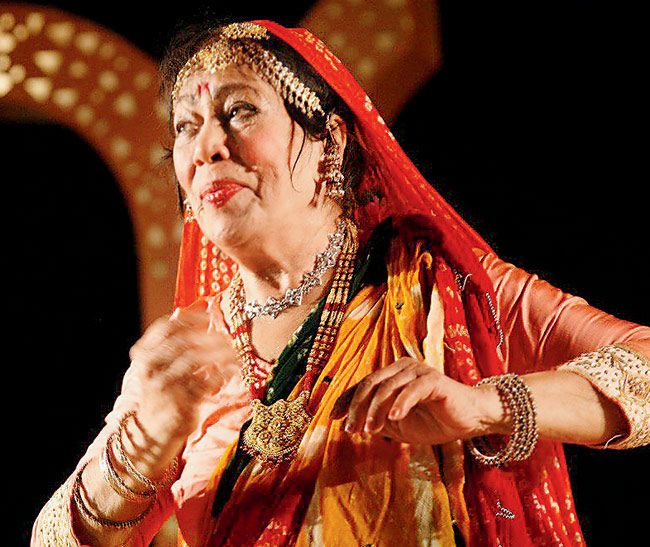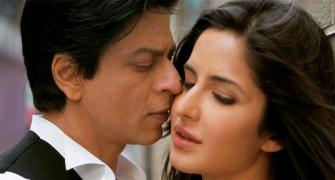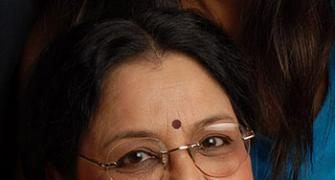 Kathak queen Sitara Devi died at a hospital in Mumbai on Tuesday. She was 94. Born in 1920 in Kolkata, Sitara Devi drew from the themes, poetry and choreography collected by her father in her choreographies. She also got inspired from the environment around her -- whether it is a town or a village.
Kathak queen Sitara Devi died at a hospital in Mumbai on Tuesday. She was 94. Born in 1920 in Kolkata, Sitara Devi drew from the themes, poetry and choreography collected by her father in her choreographies. She also got inspired from the environment around her -- whether it is a town or a village.
The characters around her came live in her dance. "By training, I am just a 'kathakar' of Krishna-leela (tales of Krishna)," the danseuse used to say. Kathak, which literally means 'katha', is a narrative drama which evolved out of the Krishna temples of hinterland to scale the pinnacle of glory in the Muslim courts.
Her roots were inextricably woven to the tradition of 'kathakars', the early Kathak dancers. She was born as Dhannolakshmi to a family of Brahmin 'kathakar' Sukhdev Maharaj and chose school and dance over an early wedding, as was the norm of the 1920s.
Her father, a Vaishnavite Brahmin scholar and Kathak exponent, sent her to a local school where she impressed her teachers and the local media with her performance in a dance drama, "Savitri Satyavan".
When her father learnt of it, he re-christened her as Sitara or the star and placed her under the care of her older sister for kathak training. By the time Sitara Devi turned 11, the family moved to Mumbai, where she impressed Nobel laureate Rabindranath Tagore with a three-hour solo recital.
Tagore offered her a shawl and Rs 50 which Sitara Devi refused and sought his blessings instead to become a great dancer. Over the next six decades, she became a Kathak legend and was a pioneering force in bringing the genre to Bollywood.
Sitara Devi married director K Asif of Mughal-e-Azam fame and then Pratap Barot. She was a vital force who stood for zest and vigour in Indian dance. She was honoured with the Legends of India Lifetime Achievement Award 2011 for her contribution to the classical dance genre for over six decades.
In his condolence message, Prime Minister Narendra Modi recalled her rich contribution to Kathak.
Sitara, who started learning Kathak at the age of seven under the guidance of her father Sukhdev Maharaj, gave many dance sequences in Hindi movies including her debut in 'Usha Haran', 'Nagina', 'Roti', 'Vatan', 'Anjali' and 'Mother India'.
Sukhdev Maharaj faced opposition in his community for promoting the dance form and teaching it to his sons and daughters but with a glittering six-decade long career, Sitara fulfilled her father's dream of reviving and popularising the dance form.
Sitara turned down the Padma Bhushan award in 2002, saying she would not accept anything less than a Bharat Ratna as she felt her contribution to Kathak deserved that.
Apart from her mastery in Kathak, Sitara was well-versed with other dance styles as well such as Bharatanatyam and several forms of folk dances of India. She also learnt the Russian ballet.
She also taught Kathak to Bollywood celebrities such as Madhubala, Rekha, Mala Sinha and Kajol.









